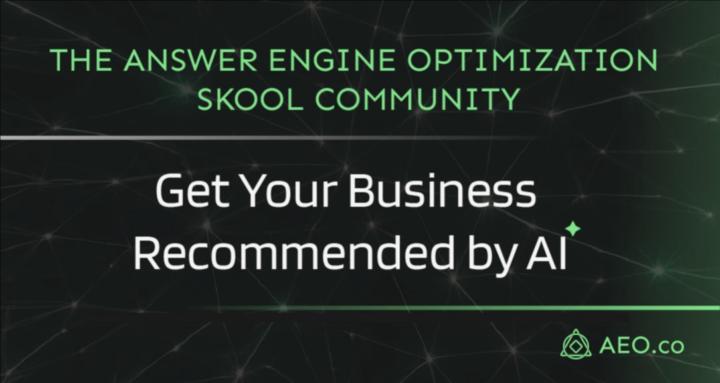Jul 21 • Announcements
⭐The State Of AEO 7/17 - Call Recording
We focused on explaining the importance and technical details of schema markup for businesses, specifically for enhancing visibility to AI crawlers. Key topics covered included the fundamental structure of schema markup, its relevance for AI, and how it helps search engines like Google and AI answer engines better understand, contextualize, and recommend content.
🚨 Get started with Schema Markup - With examples! 🚨
The Three Levels of Optimization
Julian framed the discussion around a three-level approach to answer engine optimization:
- Accessibility: Ensuring search engines can technically crawl and access your site.
- Structured Data (Schema Markup): Making the content understandable to AI once accessed.
- Entity Relationships: Creating a network of connections to give AI context about your brand.
-----
Action Items (Tasks & Follow-Ups)
- Identify Your Website's Main Entity & Properties: Define if your site represents a Person, Organization, LocalBusiness or other main Schema Types. For each, identify relevant details like name, services, location, etc.
- Review and Enhance Your About Page: Make sure your About page clearly defines your entity (who you are, what you do, key people behind it) for both users and machines. To further clarify your About page Entity the sameAs property to link your external profiles such as social profiles to your entity home (About page).
- Implement and Validate Schema: Add schema markup to your website, using tools like Schema.org Validator or Google’s Rich Results Test to ensure proper implementation.
- Test and Refine: Regularly monitor AI and search engine representations to ensure consistency with your brand. Adjust schema as needed for clarity.
We'll be going deeper through schema implementation in coming calls!
4
4 comments

skool.com/aeo
AI Answer Engines are here. Join our exclusive community to get access as we learn and develop AEO strategies to get your business recommended by AI
Powered by





